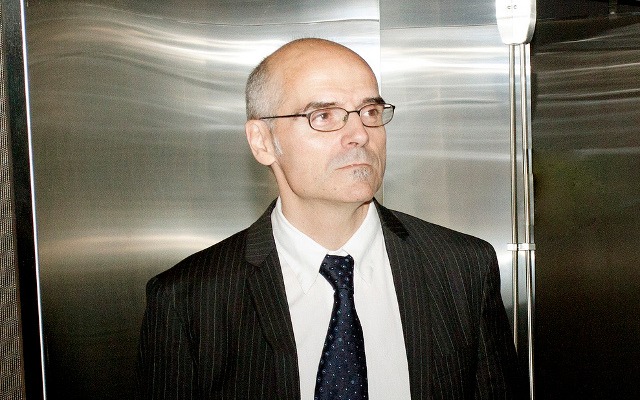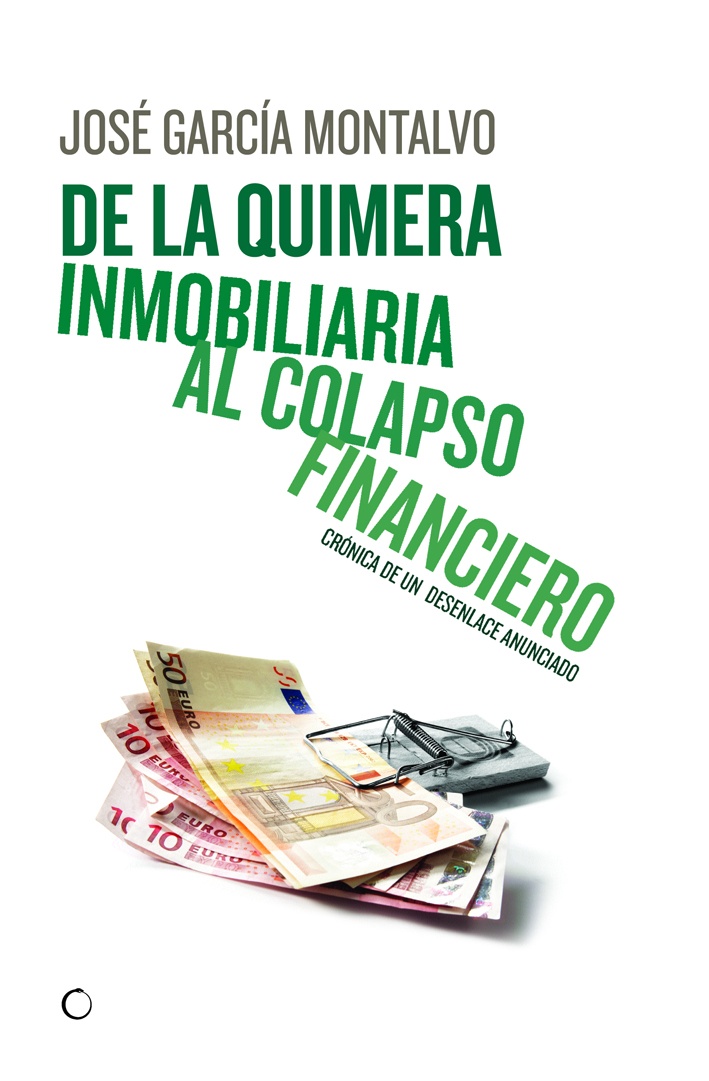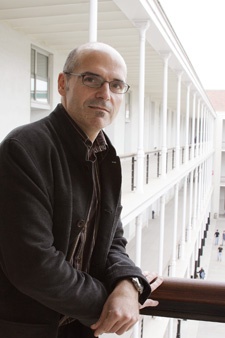faculty
Prof. García-Montalvo on the Buildup and Burst of the Housing Bubble

José García-Montalvo, Professor at the UPF and GSE, is author of the book From the Housing Boom to the Financial Collapse (2008), which outlines how and why the Spanish housing market was a ticking time bomb and what finally led to its collapse.

Prof. García-Montalvo's new book, From the Housing Boom to the Financial Collapse
You have warned about the housing sector in Spain for some years now. What were the telltale signs that there was a housing bubble forming?
A telltale sign that there was a problem was the very rapid increase in the ratio of prices over disposable income. So if the historical average is 3.5 or 4 years of the disposable income to buy a house, we were going up to 7 years or more in Spain, without anybody expressing much concern. Also, a country of 46 million people was initiating 865 thousand houses in one year, as was the case of Spain in 2006, there are red flags. The US, for example, also has high immigration; in contrast there are 300 million people and the new building permits were 1.6 millions in 2006. As of March 2009 the annualized pace of new building permits in the US were 516.000 units.
There is another indicator of housing bubbles: the return on the rental of houses. That is the inversion of price earnings ratio for housing. A reasonable number for that would be a return of around 4%. In Spain it went down to 2%, which is totally unreasonable.
However, despite all of these signs there was little done to prevent the housing bubble from forming. Because 25% of the growth of GDP was due to the construction sector, the government seemed reluctant to take measures to assess the real market value of the houses being constructed.
We teach our economics students that one of the objectives of economic policy is to keep actual inflation close to the target inflation indicated by the central bank- around 2%, in the case of Spain. However, a second point that tends to be forgotten is that GDP should grow at the potential level of growth, which is strongly tied to productivity. The worst thing that can happen is for growth to fluctuate to much without regard to the potential level of growth, which is precisely what was happening in Spain. The fact that productivity was not growing, but GDP was, was a strong sign that there was something profoundly wrong with the economy.
What are some of the measures taken by governments to combat the worsening economy, and how would you evaluate them?
There are two types of responses that have generally been used. The first is trying to help banks by buying their toxic assets. This is a difficult feat since in order to buy them, you first have to price them. It is difficult to know the true market price because there is currently so little liquidity in the market and few transactions to accurately divulge the real market price. Obviously, the government doesn’t want to pay more than the actual value of these assets, even though the only way to solve this problem for the banks is to pay more than their actual market price!
Another strategy being implemented in the US is to help the families affected by subprime mortgages, by going through companies that contributed to the problem like Freddie Mac and Fanny Mae. In the recent package passed by US President Obama, there is 200 million designated for these companies to guarantee the mortgages of families “in good standing”. There is a further enormous sum allocated to help reduce the income over mortgage payment to around 34% if the families have been “prudent”. Five to seven million families will potentially take advantage of these opportunities. What exactly is defined as “prudent”, nobody knows.
What good can come from the crisis? What can future students of Finance learn and apply to their careers?
I think there are good opportunities in finance. The mess we are in now has been caused in part by using the wrong financial models for pricing risk. The problem was that the only thing the analyst had to price an asset was push the enter button, and there were so many assets that had to be priced that few people paused to rethink the assumptions in the model.
What we need are financial analysts and people expert enough to know when the assumptions of a pricing model are right and when they are wrong. In order to be able to understand if the assumptions of the model are the right ones to include, you need a specialist. This requires at least master of finance, if not a doctoral degree.
People are working on the new generation of models as we speak. Not only will finance programs change, but MBA and management programs will change was well to give a more complete understanding of the financial landscape.
If you are going to do something related to finance, it is important to have a specialized master in finance that tells you what’s inside the tools that you are using. It won’t be the solution for every financial problem we are currently dealing with, because the reality is that all transactions are making bets. So, you never know, but the more information and knowledge you have the better you understand why your bet may not work.

In addition to his role as Professor at UPF (where his is also Head of the Department) and Affiliated Professor at the BSE, José García-Montalvo is the Director of the newly founded Center for Research on the Economies of the Mediterranean (CREMed). He is a consultant for the Interamerican Development Bank and the World Bank. Prof. García-Montalvo has been a visiting professor of economics at Harvard University (1996) and a researcher at Harvard University KSG (1995). In January 2009 he was awarded the ICREA-Academia Prize for outstanding research.
In the 2008-2009 academic year, Prof. García-Montalvo teaches in the MSc in Finance and MSc in Economics.

From the Housing Boom to the Financial Collapse, Prof. Garcia-Montalvo's new book
